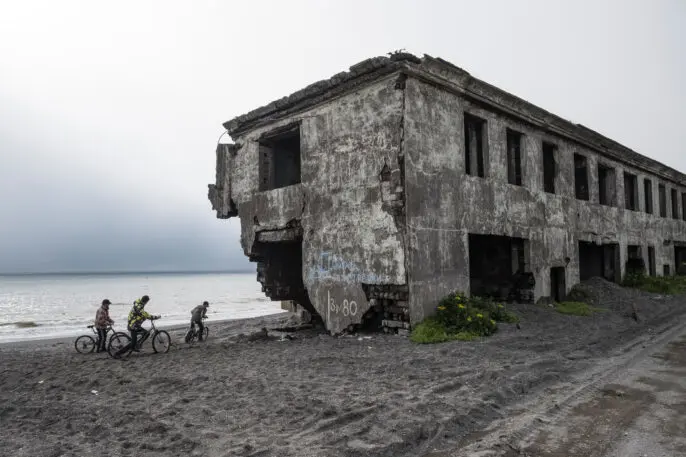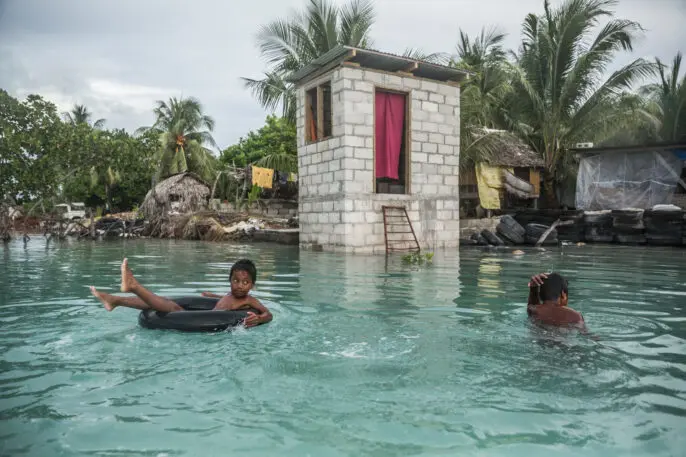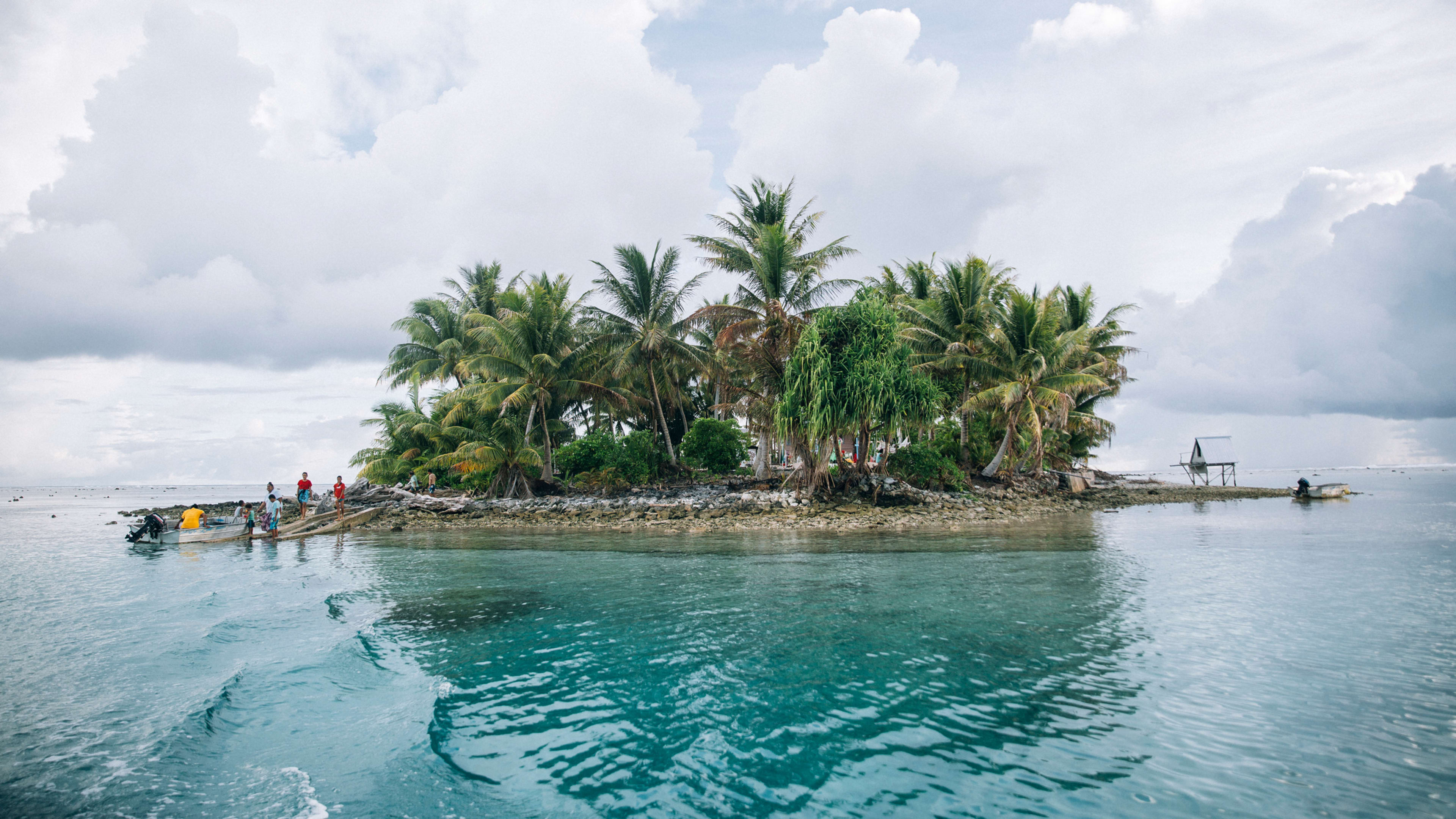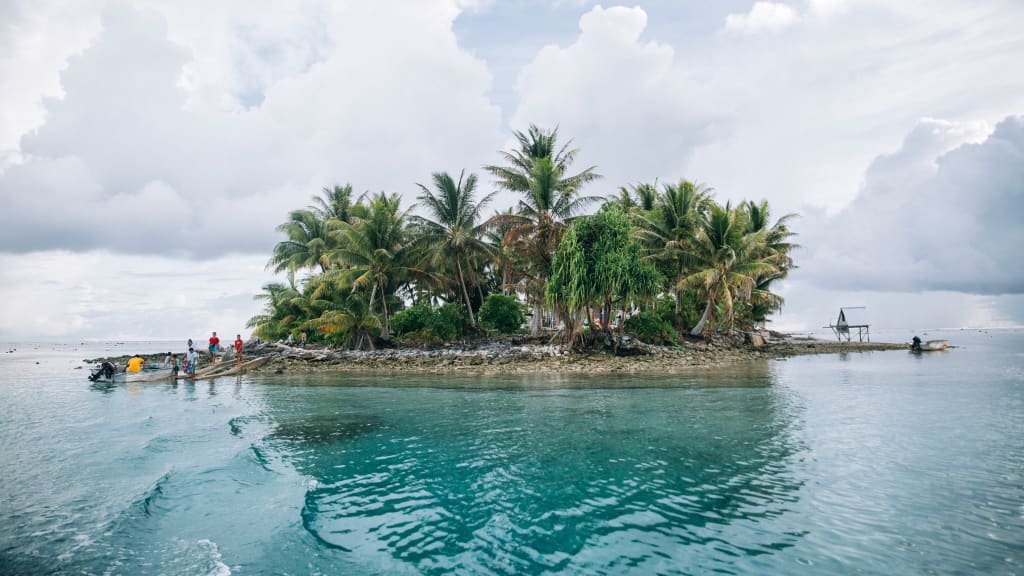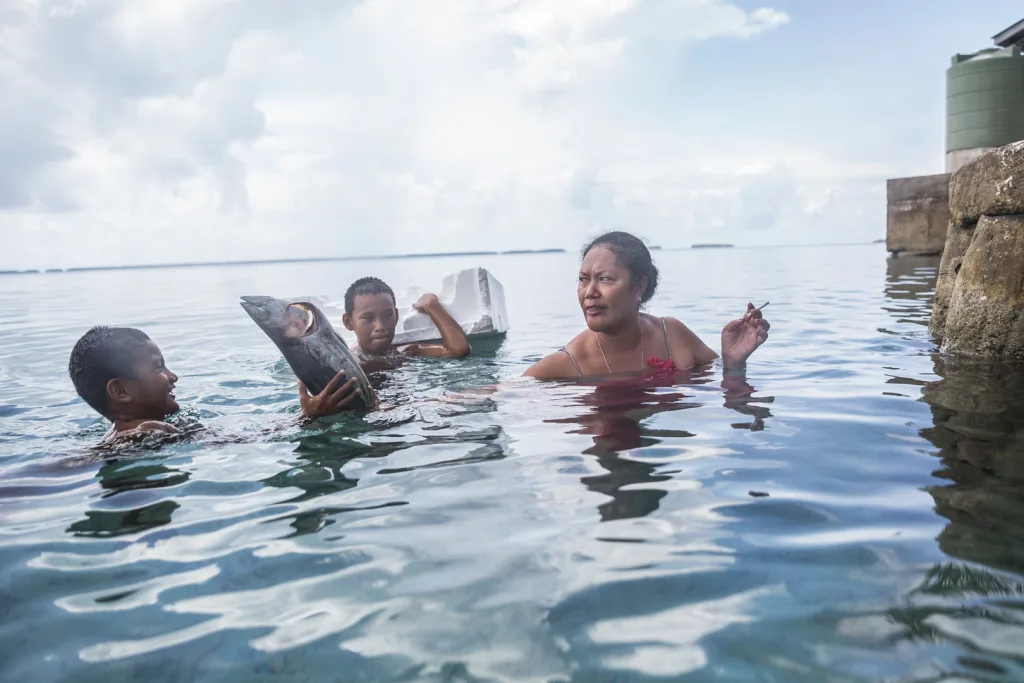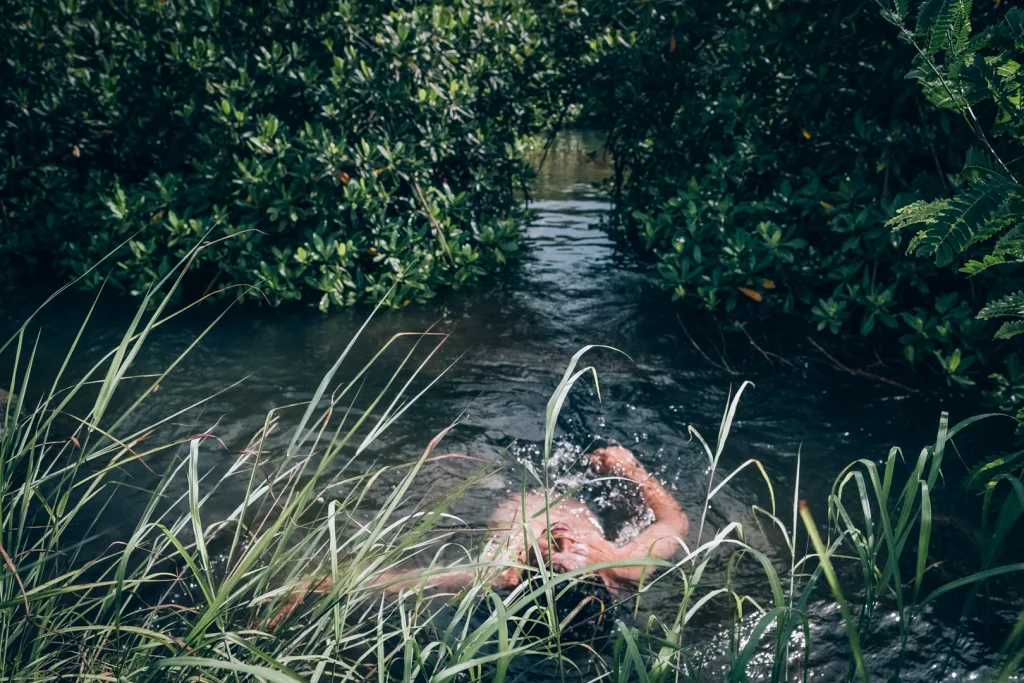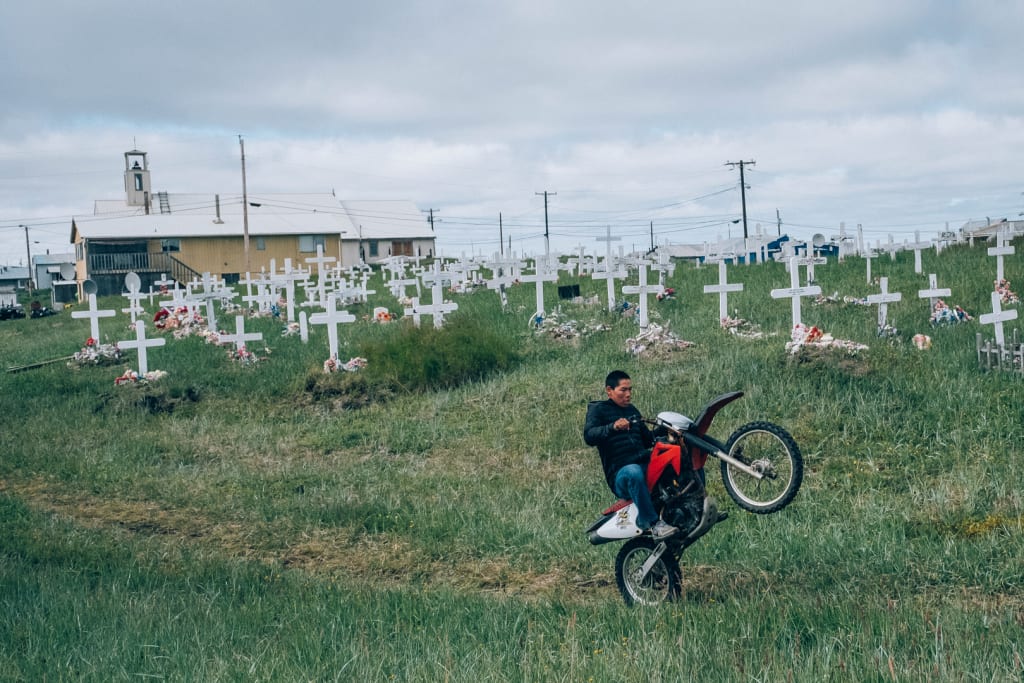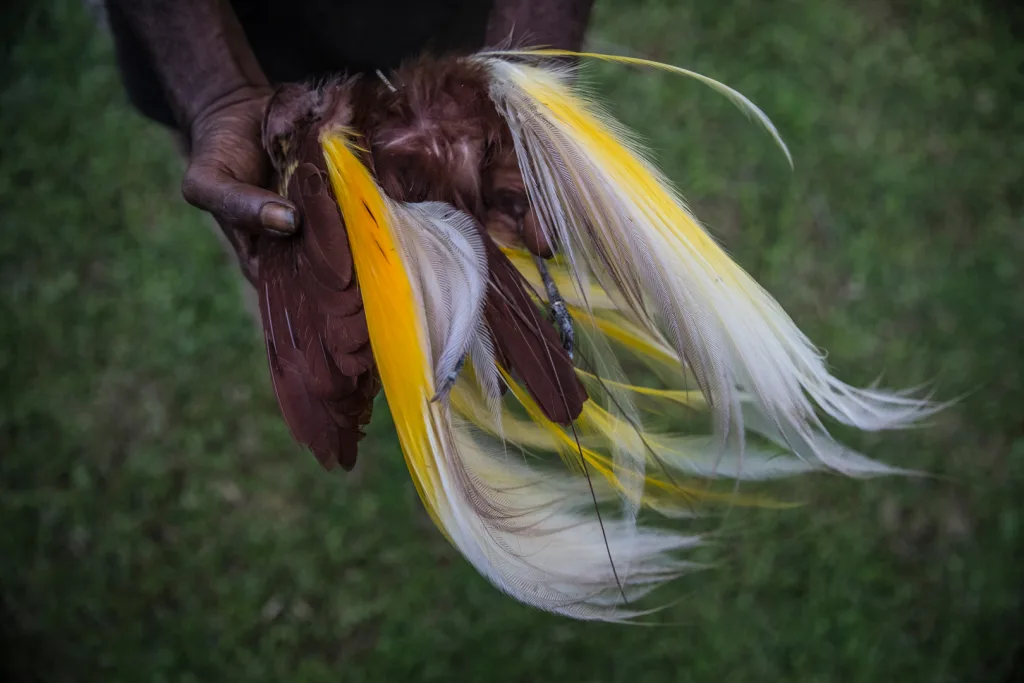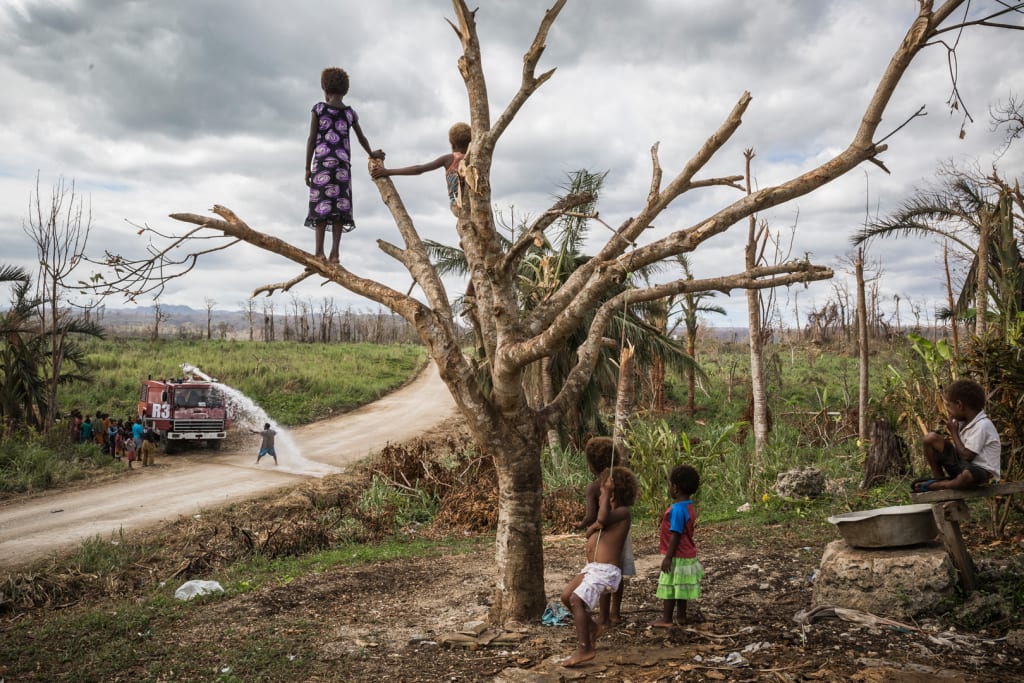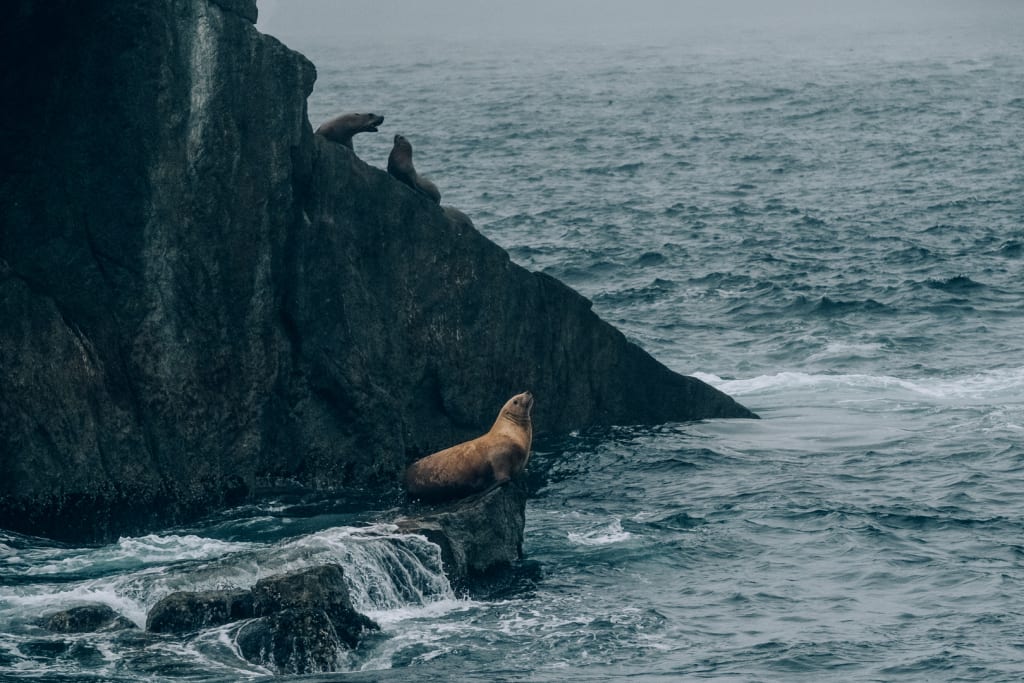Tokelau (New Zealand), 2016. [Photo: ©Vlad Sokhin/Panos Pictures/Schilt Publishing]
Tokelau (New Zealand), 2016. Teafua Tanu Islet of Tokelau is used by Fakaofo Atoll’s residents as a Catholic cemetery. Different islets in the chain of atolls have been designated for different purposes – be it agriculture or to serve as pigsties or cemeteries.[Photo: ©Vlad Sokhin/Panos Pictures/Schilt Publishing]
Guam, USA, 2016. [Photo: ©Vlad Sokhin/Panos Pictures/Schilt Publishing]
Guam, USA, 2016. Roxanna Miller, monitoring technician of the University of Guam Marine Lab, inspecting species of staghorn corals severely impacted by coral bleaching events in 2013–2014. The bleaching resulted in the loss of about half of all Guam’s staghorn corals. [Photo: ©Vlad Sokhin/Panos Pictures/Schilt Publishing]
Shishmaref town, Alaska, USA, 2016. Shishmaref is one of the settlements most affected by climate change in Alaska. Located on a sandbar between Chukchi Sea and Shishmaref Lagoon, the village has lost significant landmass to rising sea levels and coastal erosion. In 1995, the village had to move its airport to a new location as the old runway was closed due to erosion. On 16 August, 2016, the village residents voted to relocate their town to a safer place. [Photo: ©Vlad Sokhin/Panos Pictures/Schilt Publishing]
East Sepik, Papua New Guinea, 2014. Jack Pombo, 41, from Trin Village, holding a dead bird of paradise. He finds many dead birds when he goes to logging areas. [Photo: ©Vlad Sokhin/Panos Pictures/Schilt Publishing]
Efate Island, Vanuatu, 2015. Children of Etas Village on Efate Island watch a water truck delivering drinking water to their village. After Cyclone Pam hit Vanuatu in March 2015, many local communities were left without fresh water supplies. International charity Oxfam organised an airport water tank truck to come to the villages around Port Vila and help locals to fill their barrels with drinking water. [Photo: ©Vlad Sokhin/Panos Pictures/Schilt Publishing]
Alaska, USA, 2016. Steller sea lions resting on the rocks of Grotto Island in Kenai Fjords National Park, Alaska. According to the US National Science Foundation, Steller sea lion populations declined by over 80% between the late 1970s and early 1990s in the western Gulf of Alaska and the Aleutian Islands. [Photo: ©Vlad Sokhin/Panos Pictures/Schilt Publishing]
Eight years ago, as a photographer on assignment in Papua New Guinea covering deforestation, Vlad Sokhin also started to document the sea level rise he was witnessing firsthand. “Slowly, the sea was claiming the land, and people had to move,” he says. He decided to begin a larger project to track the impacts of climate change through the Pacific, from small island nations to coastal Alaska.
[Photo: ©Vlad Sokhin/Panos Pictures/Schilt Publishing] A new book,
Warm Waters , shows the reality of climate change in the places that Sokhin spent the past several years visiting by canoe and helicopter and seaplane. In the Arctic, he saw houses sinking into the permafrost, and villages planning to relocate. In Utqiagvik, Alaska, he photographed an Iñupiat girl standing on melting ice, which is forcing away the animals that the community traditionally relied on for food.
Kamchatka Peninsula, Russia, 2016. [Photo: ©Vlad Sokhin/Panos Pictures/Schilt Publishing]In the Kamchatka Peninsula in Russia, he documented crumbling, abandoned apartment blocks in an area where the coastline is eroding. In the island nation of Kiribati, he saw traditional houses flood at high tide, and families temporarily tie up babies so that they wouldn’t drown. “This is climate change,” he says. “This is the sort of thing that when you see it, you understand that wow, this is real.”
South Tarawa, Kiribati, 2016. [Photo: ©Vlad Sokhin/Panos Pictures/Schilt Publishing]The images are more powerful than any statistic or report—the same reason that at the global climate conference last week, the foreign minister of Tuvalu chose to give a remote speech
standing knee-deep in the ocean as he talked about rising sea levels and why the world needs a real plan–and sufficient funding–to limit global warming to no more than 1.5 degrees Celsius.
Utqiagvik (formerly Barrow), Alaska, USA, 2016. An Iñupiat girl, Amaia, 11, standing on an ice floe on a shore of the Arctic Ocean in Barrow, Alaska. The melting of the Arctic ice is one of the many effects of global warming that has a serious impact on the lives of humans and wildlife. Melting glaciers and sea ice in Alaska led to the mass migration to the coast of walruses and sea lions in 2015. It is also getting more difficult for the Iñupiat people to hunt seals and walruses who mostly live on the sea ice. [Photo: ©Vlad Sokhin/Panos Pictures/Schilt Publishing]“Many people in the world can’t go to these places,” Sokhin says. “But when they see the pictures, they realize, OK, this is real, someone else went and brought it to us. That’s why I published the book, and an e-book. . . . Anyone can get the book and on their own screen, go to Oceania, and be there and see what’s happening.”
Recognize your brand’s excellence by applying to this year’s Brands That Matter Awards before the early-rate deadline, May 3.

